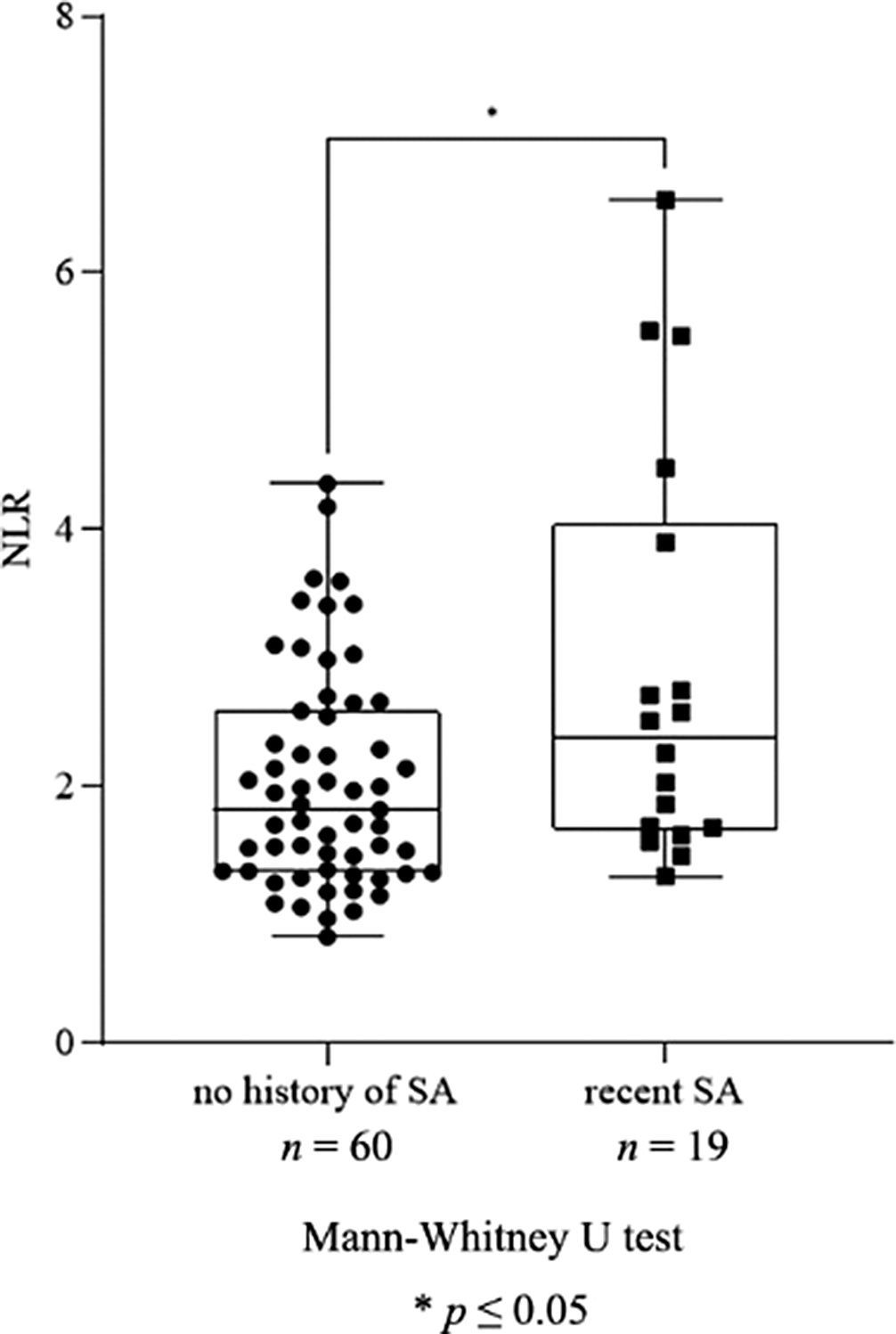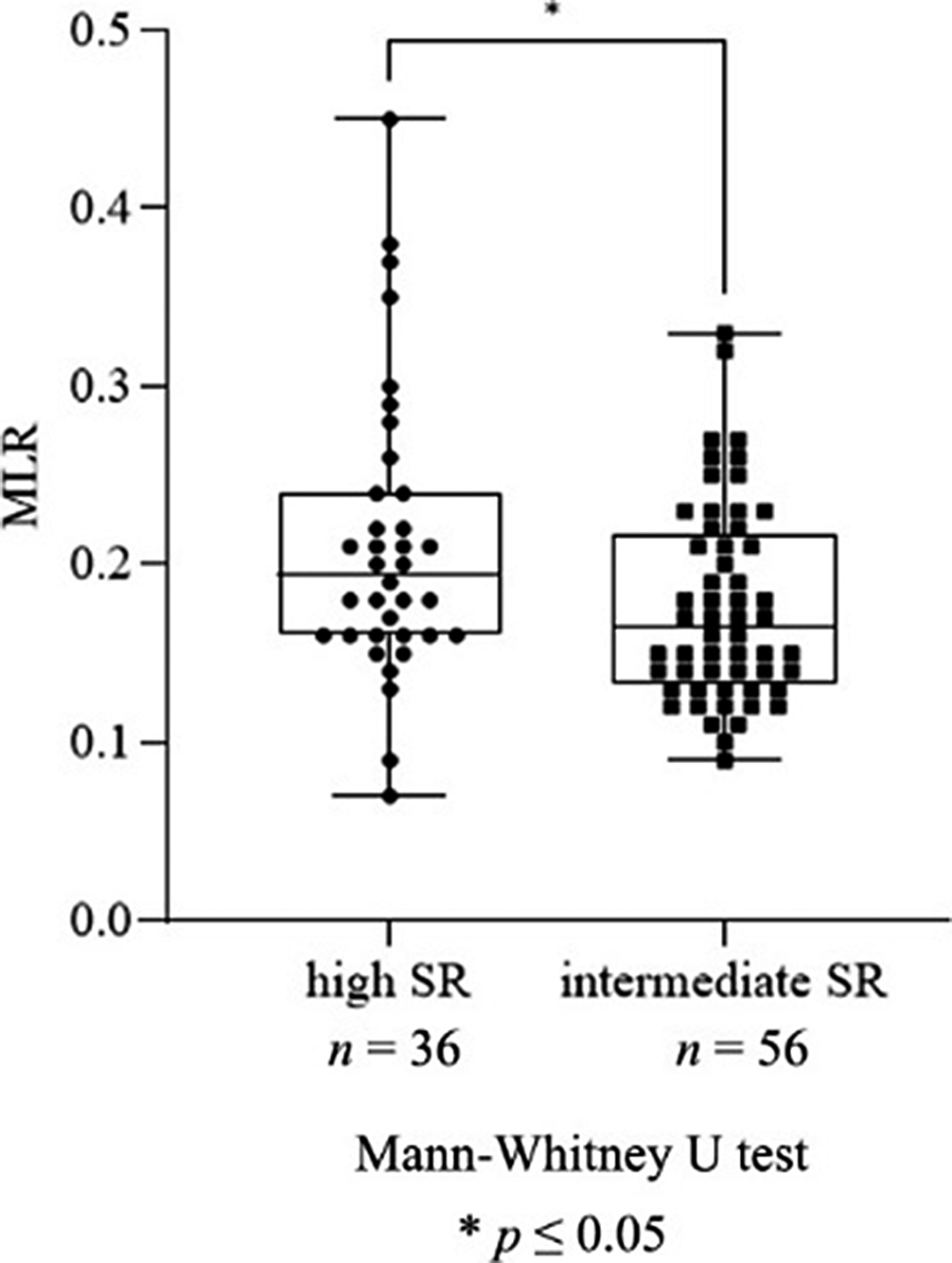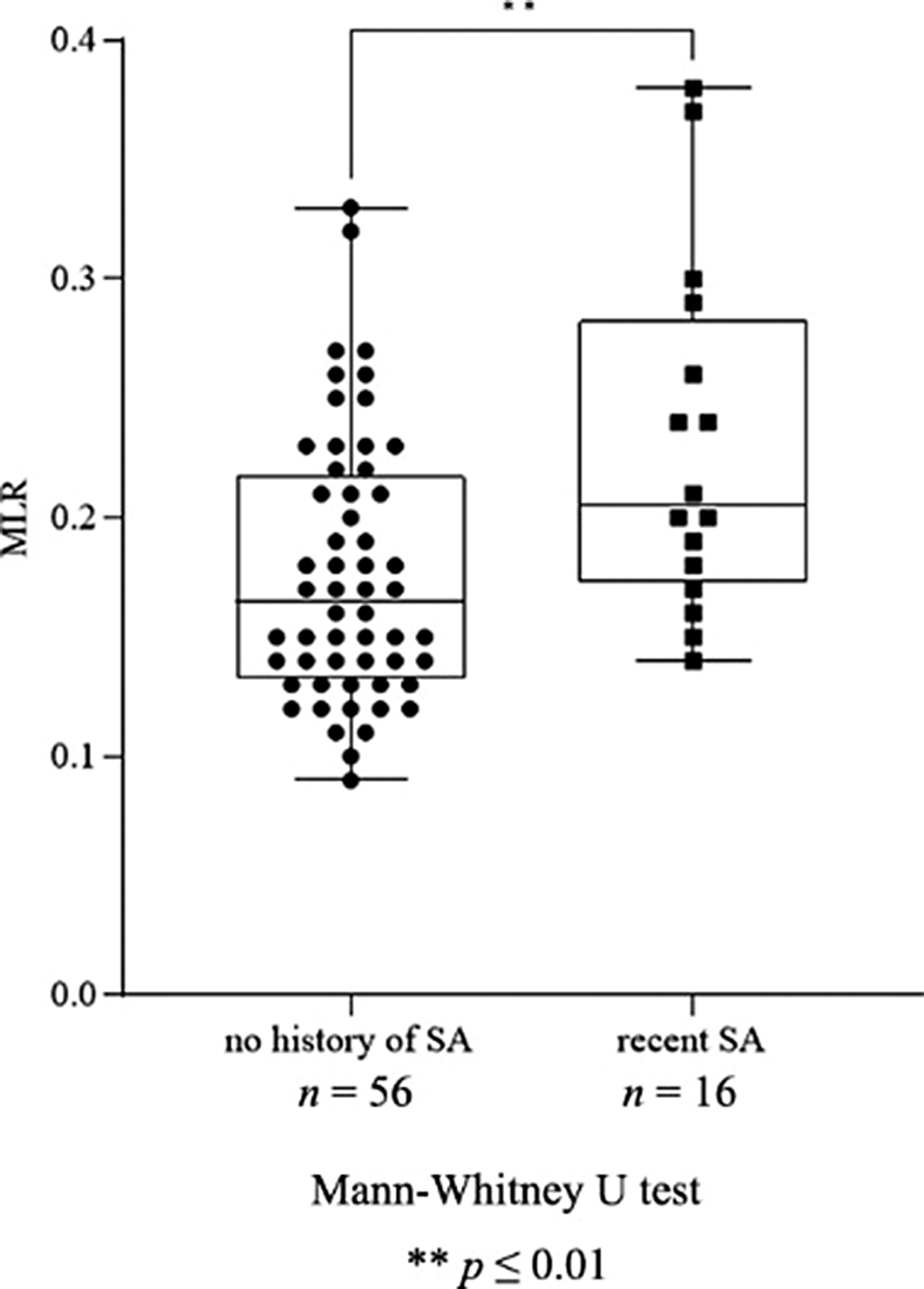89 results
Investigation of peripheral inflammatory biomarkers in association with suicide risk in major depression
-
- Journal:
- European Psychiatry / Volume 67 / Issue S1 / April 2024
- Published online by Cambridge University Press:
- 27 August 2024, pp. S792-S793
-
- Article
-
- You have access
- Open access
- Export citation
Spontaneous mentalizing in patients with schizophrenia – a meta-analysis
-
- Journal:
- European Psychiatry / Volume 67 / Issue S1 / April 2024
- Published online by Cambridge University Press:
- 27 August 2024, p. S746
-
- Article
-
- You have access
- Open access
- Export citation
A functional linguistic analysis of social cohesion impairment in guided interviews conducted with individuals with schizophrenia
-
- Journal:
- European Psychiatry / Volume 66 / Issue S1 / March 2023
- Published online by Cambridge University Press:
- 19 July 2023, p. S256
-
- Article
-
- You have access
- Open access
- Export citation
A systematic review and meta-analysis of implicit Theory of Mind in schizophrenia
-
- Journal:
- European Psychiatry / Volume 65 / Issue S1 / June 2022
- Published online by Cambridge University Press:
- 01 September 2022, pp. S113-S114
-
- Article
-
- You have access
- Open access
- Export citation
The effects of reading literary fiction on the measurement and development of mentalization skills among schizophrenic patients
-
- Journal:
- European Psychiatry / Volume 65 / Issue S1 / June 2022
- Published online by Cambridge University Press:
- 01 September 2022, p. S154
-
- Article
-
- You have access
- Open access
- Export citation
Elevated osteopontin and IFNy serum levels and increased neutrophil-to-lymphocyte ratio are associated with the severity of symptoms in schizophrenia
-
- Journal:
- European Psychiatry / Volume 65 / Issue S1 / June 2022
- Published online by Cambridge University Press:
- 01 September 2022, p. S106
-
- Article
-
- You have access
- Open access
- Export citation
The investigation of implicit Theory of Mind in patients with schizophrenia – a whole brain fMRI study
-
- Journal:
- European Psychiatry / Volume 65 / Issue S1 / June 2022
- Published online by Cambridge University Press:
- 01 September 2022, p. S199
-
- Article
-
- You have access
- Open access
- Export citation
3 - Preserving Records and Writing History in Worcester’s Conquest-Era Archives
-
-
- Book:
- Constructing History across the Norman Conquest
- Published by:
- Boydell & Brewer
- Published online:
- 16 July 2022
- Print publication:
- 13 May 2022, pp 61-91
-
- Chapter
- Export citation
210 Antibody function, antigenic target and glycans determine the transfer of herpes simplex virus (HSV) antibodies (Abs) from mothers to newborns and transfer is altered by SARS-CoV-2
-
- Journal:
- Journal of Clinical and Translational Science / Volume 6 / Issue s1 / April 2022
- Published online by Cambridge University Press:
- 19 April 2022, pp. 32-33
-
- Article
-
- You have access
- Open access
- Export citation
Architecture and the Collective: Structures and Processes of Architectural Work in the GDR
- Part of
-
- Journal:
- Architectural History / Volume 65 / 2022
- Published online by Cambridge University Press:
- 07 November 2022, pp. 105-122
- Print publication:
- 2022
-
- Article
- Export citation
The heart of bureaucratic power: Explaining international bureaucracies’ expert authority
-
- Journal:
- Review of International Studies / Volume 47 / Issue 3 / July 2021
- Published online by Cambridge University Press:
- 22 February 2021, pp. 353-376
- Print publication:
- July 2021
-
- Article
-
- You have access
- Open access
- HTML
- Export citation
Eimeria bovis infections induce G1 cell cycle arrest and a senescence-like phenotype in endothelial host cells
-
- Journal:
- Parasitology / Volume 148 / Issue 3 / March 2021
- Published online by Cambridge University Press:
- 26 October 2020, pp. 341-353
-
- Article
-
- You have access
- Open access
- HTML
- Export citation
An Ecology of the Russian Avant-Garde Picturebook. By Sara Pankenier Weld. Amsterdam: John Benjamins Publishing Company, 2018. xiv, 236 pp. Bibliography. Index. Plates. $143.00, hard bound.
-
- Journal:
- Slavic Review / Volume 79 / Issue 2 / Summer 2020
- Published online by Cambridge University Press:
- 10 August 2020, pp. 496-497
- Print publication:
- Summer 2020
-
- Article
- Export citation
DESIGN OF AN ACTIVE SEAT SUSPENSION FOR A PASSENGER VEHICLE
- Part of
-
- Journal:
- Proceedings of the Design Society: DESIGN Conference / Volume 1 / May 2020
- Published online by Cambridge University Press:
- 11 June 2020, pp. 2511-2520
-
- Article
-
- You have access
- Open access
- Export citation
P01-02 - Depression and obstructive sleep apnea - results from a 12-month survey in routine clinical practice
-
- Journal:
- European Psychiatry / Volume 25 / Issue S1 / 2010
- Published online by Cambridge University Press:
- 17 April 2020, 25-E207
-
- Article
-
- You have access
- Export citation
PW01-195 - The Evaluation Of Mentalisation Deficit With False-Irony Test In Schizophrenia
-
- Journal:
- European Psychiatry / Volume 25 / Issue S1 / 2010
- Published online by Cambridge University Press:
- 17 April 2020, 25-E1602
-
- Article
-
- You have access
- Export citation
PW01-156 - Exploration Of Irony Appreciation In Schizophrenia: A Functional Mri Study
-
- Journal:
- European Psychiatry / Volume 25 / Issue S1 / 2010
- Published online by Cambridge University Press:
- 17 April 2020, 25-E1555
-
- Article
-
- You have access
- Export citation
P01-44 - Euthymic Bipolar Patients’ Deficits in in Social Cognition Tasks
-
- Journal:
- European Psychiatry / Volume 25 / Issue S1 / 2010
- Published online by Cambridge University Press:
- 17 April 2020, 25-E263
-
- Article
-
- You have access
- Export citation
PW01-154 - Brain Activation During Irony Tasks In Euthymic Bipolar Patients - A Functional Mri Study Of Social Cognition
-
- Journal:
- European Psychiatry / Volume 25 / Issue S1 / 2010
- Published online by Cambridge University Press:
- 17 April 2020, 25-E1553
-
- Article
-
- You have access
- Export citation
P0134 - Structural brain abnormalities in the early phase of schizophrenia
-
- Journal:
- European Psychiatry / Volume 23 / Issue S2 / April 2008
- Published online by Cambridge University Press:
- 16 April 2020, pp. S119-S120
-
- Article
-
- You have access
- Export citation




